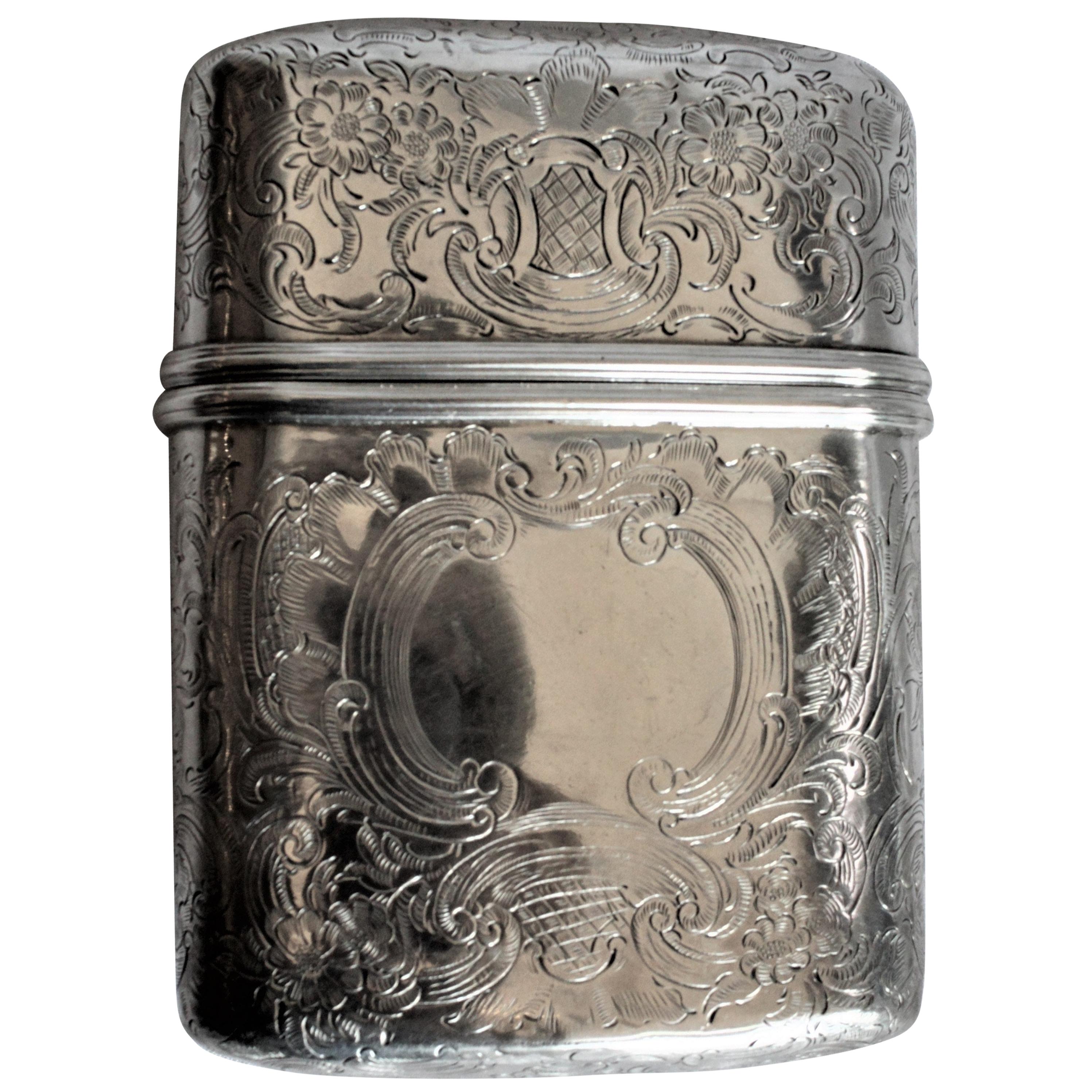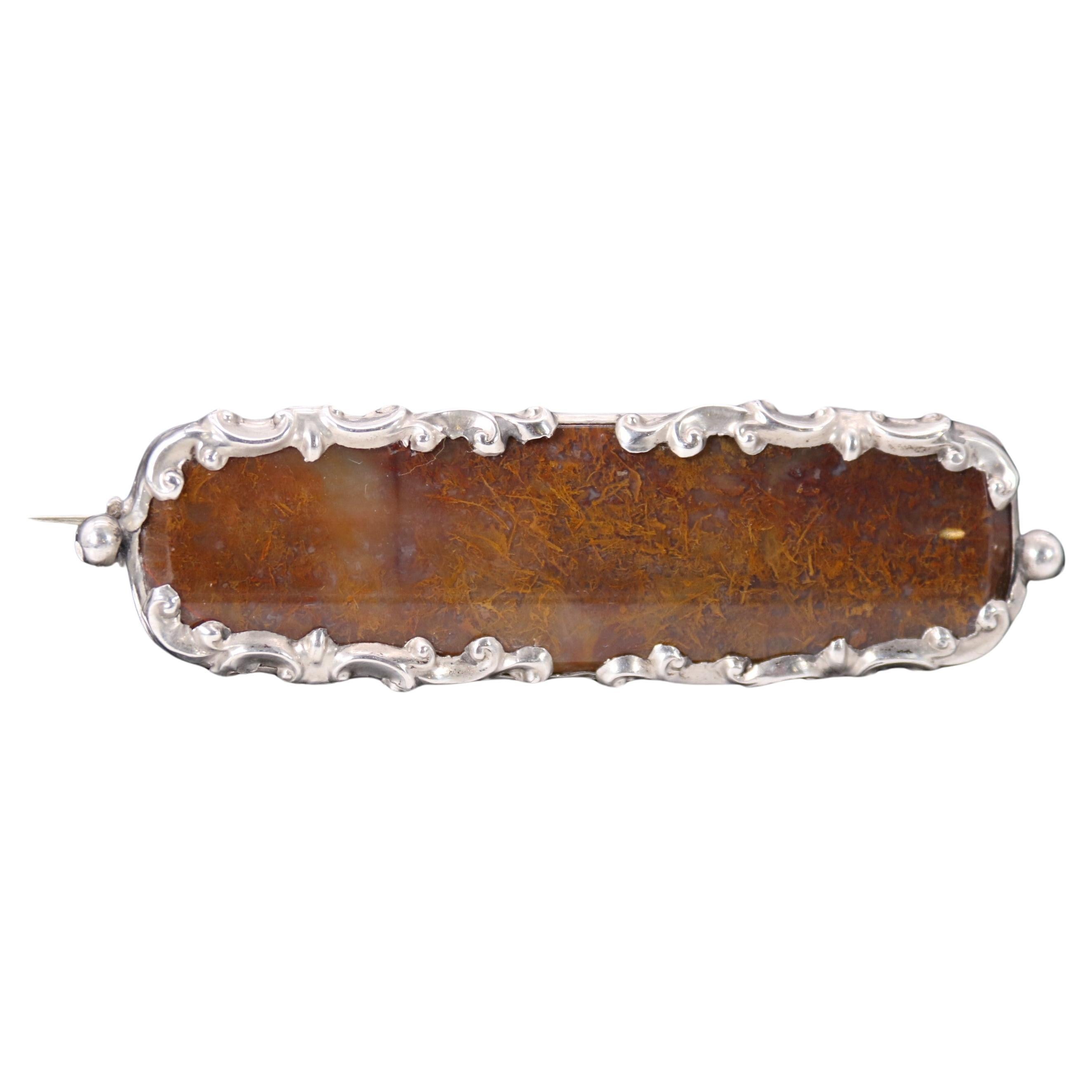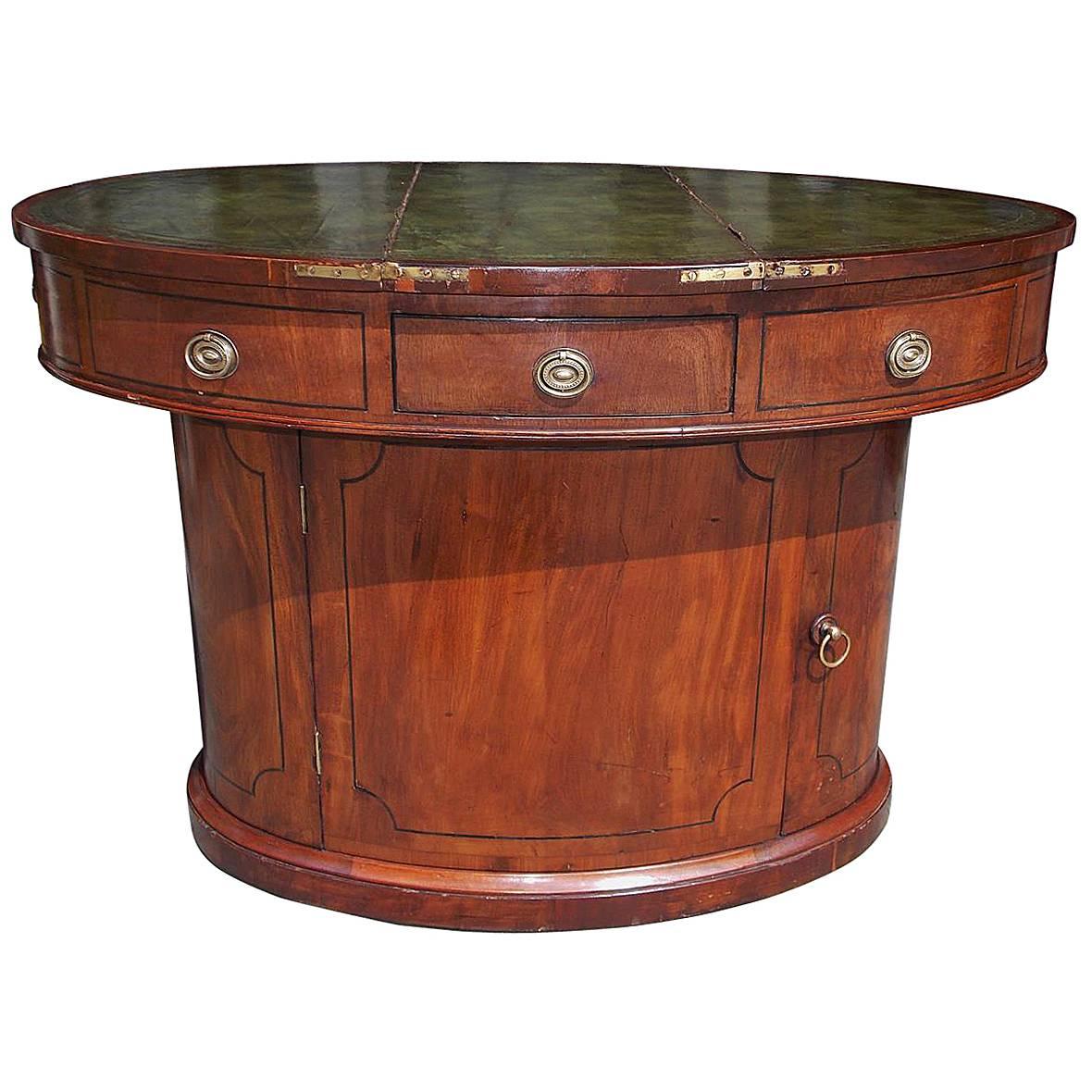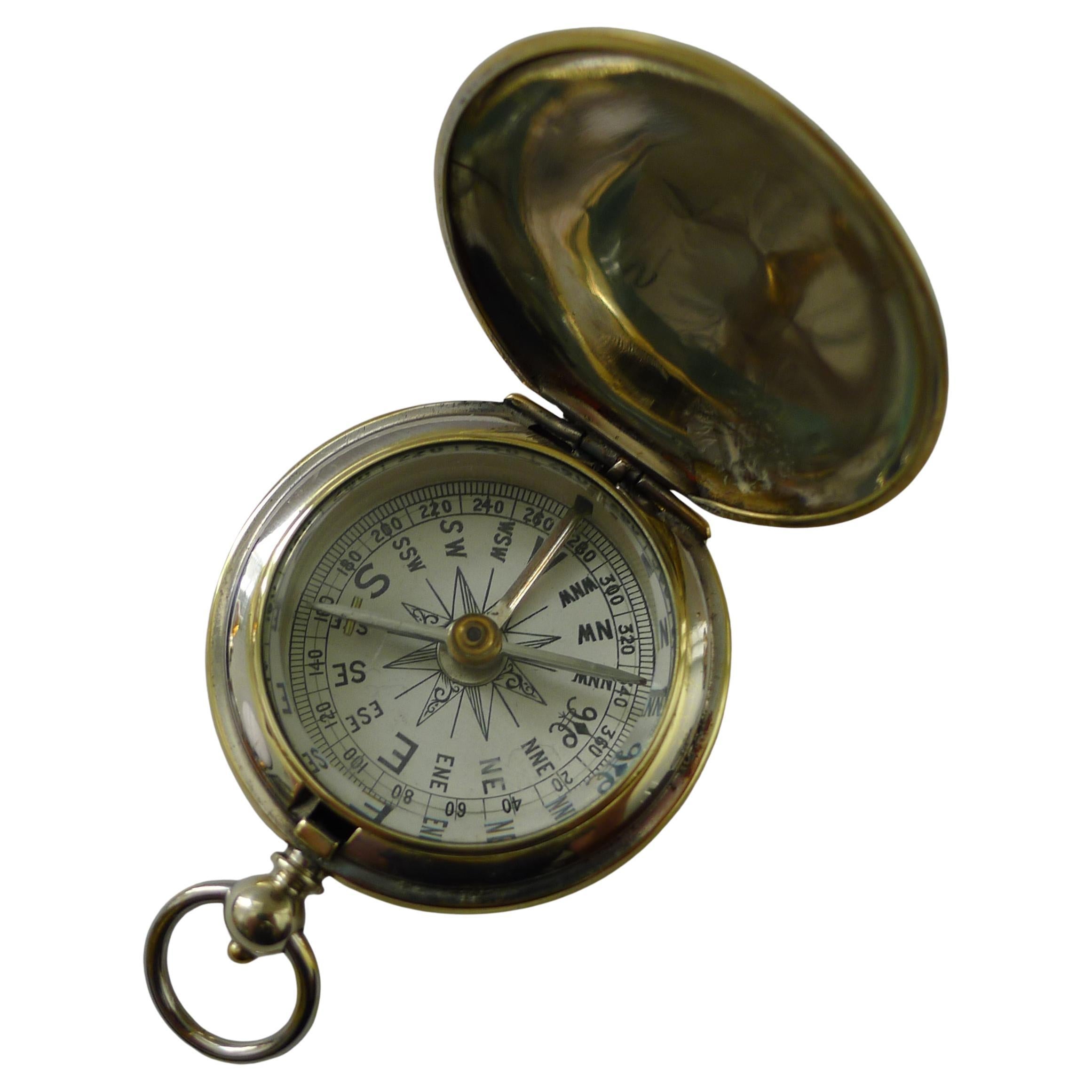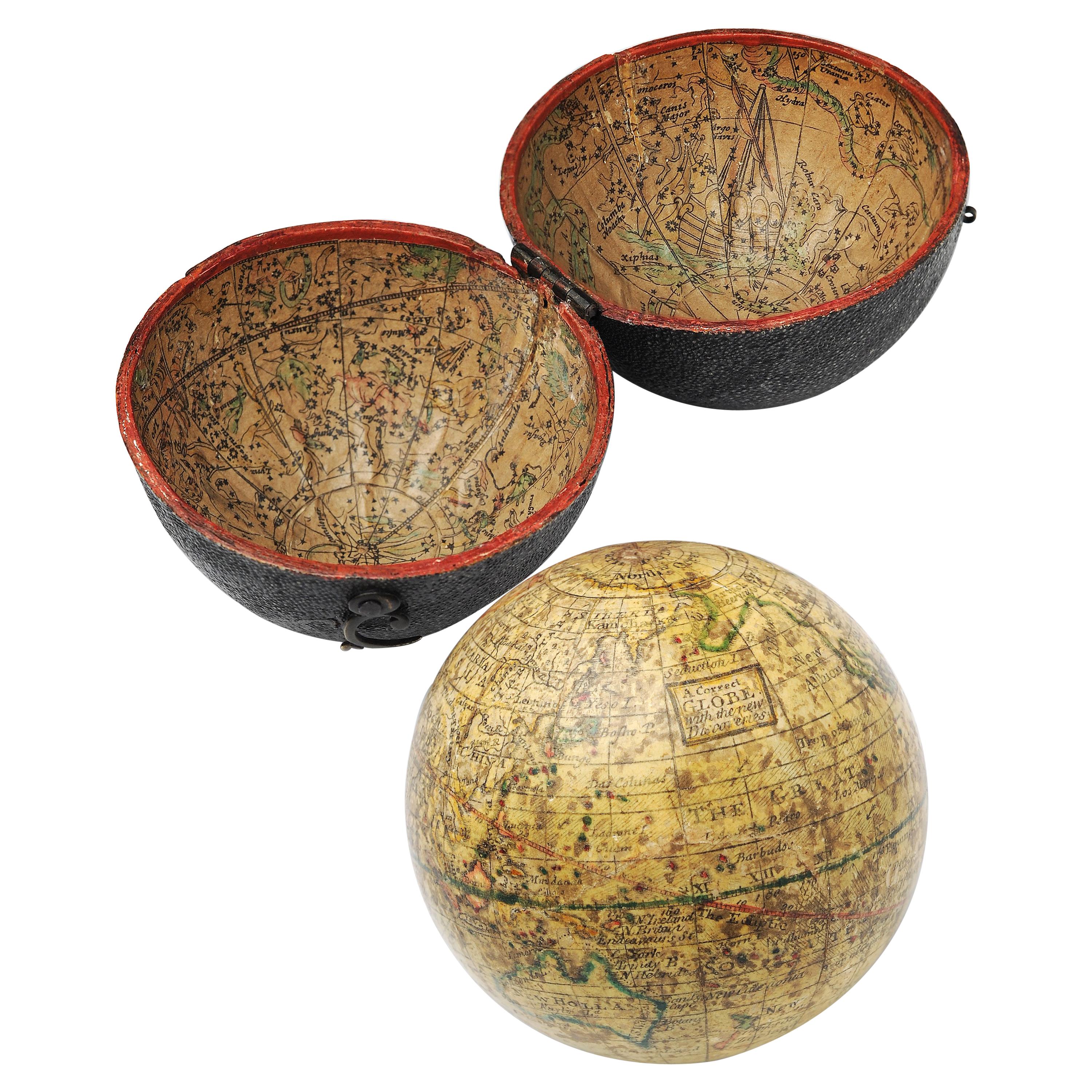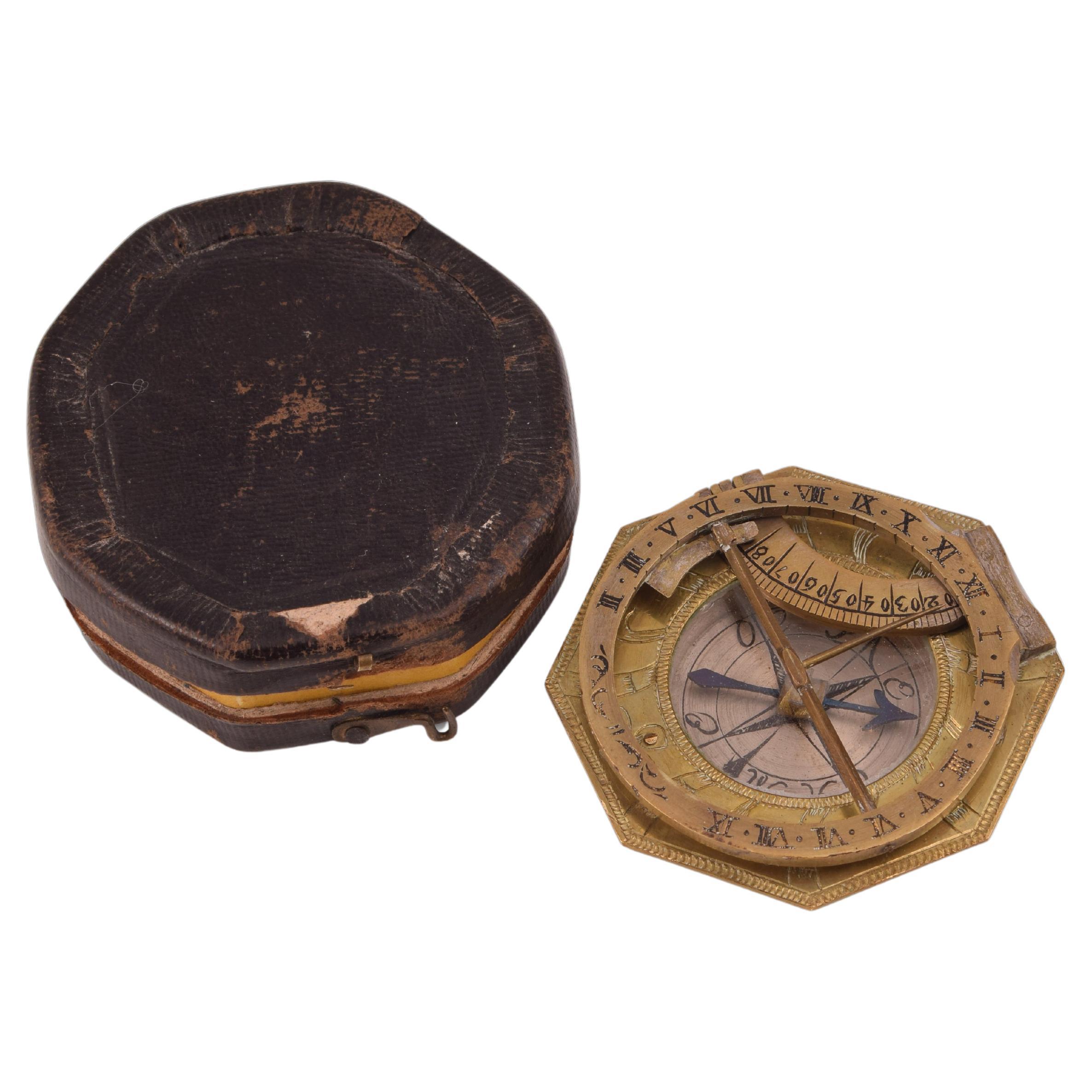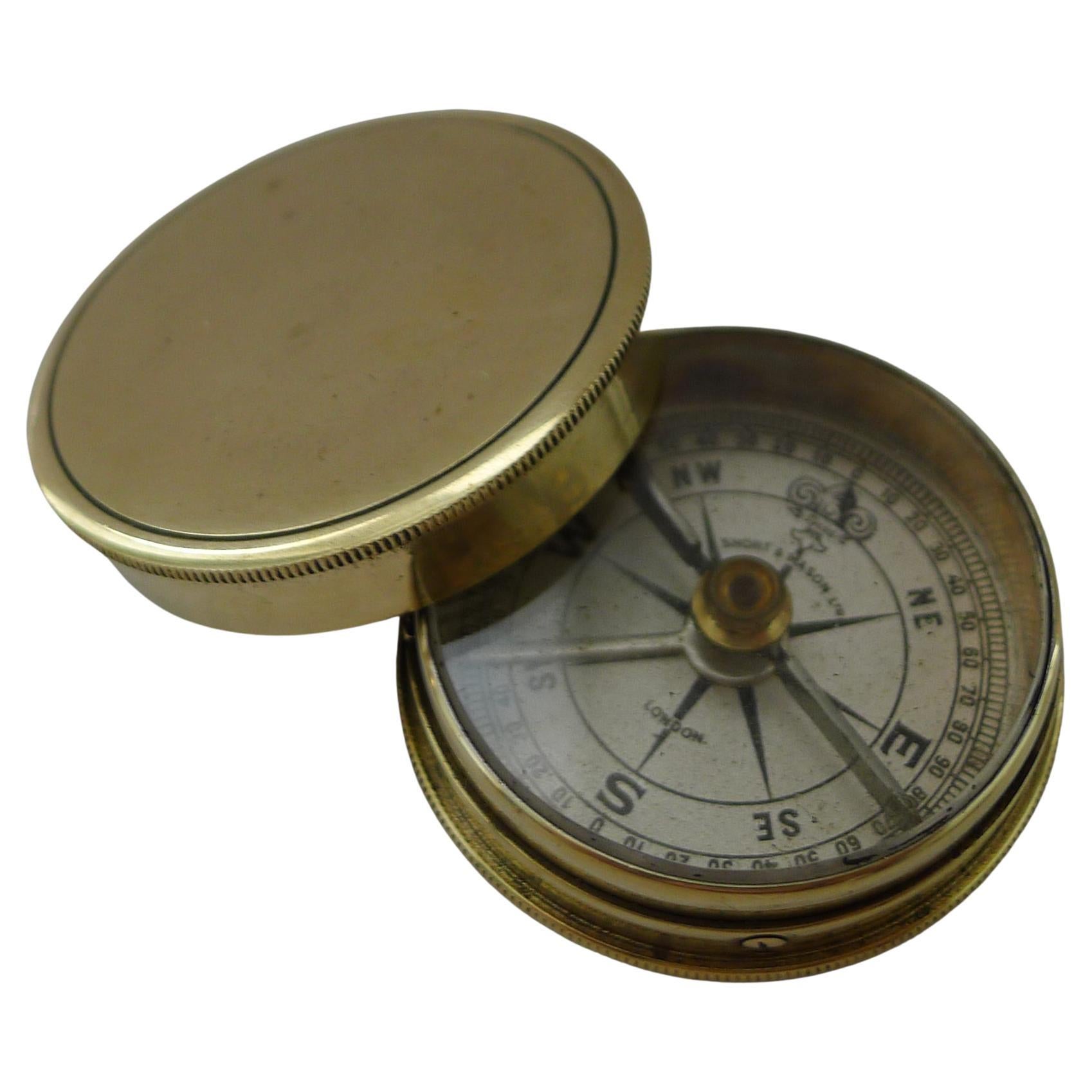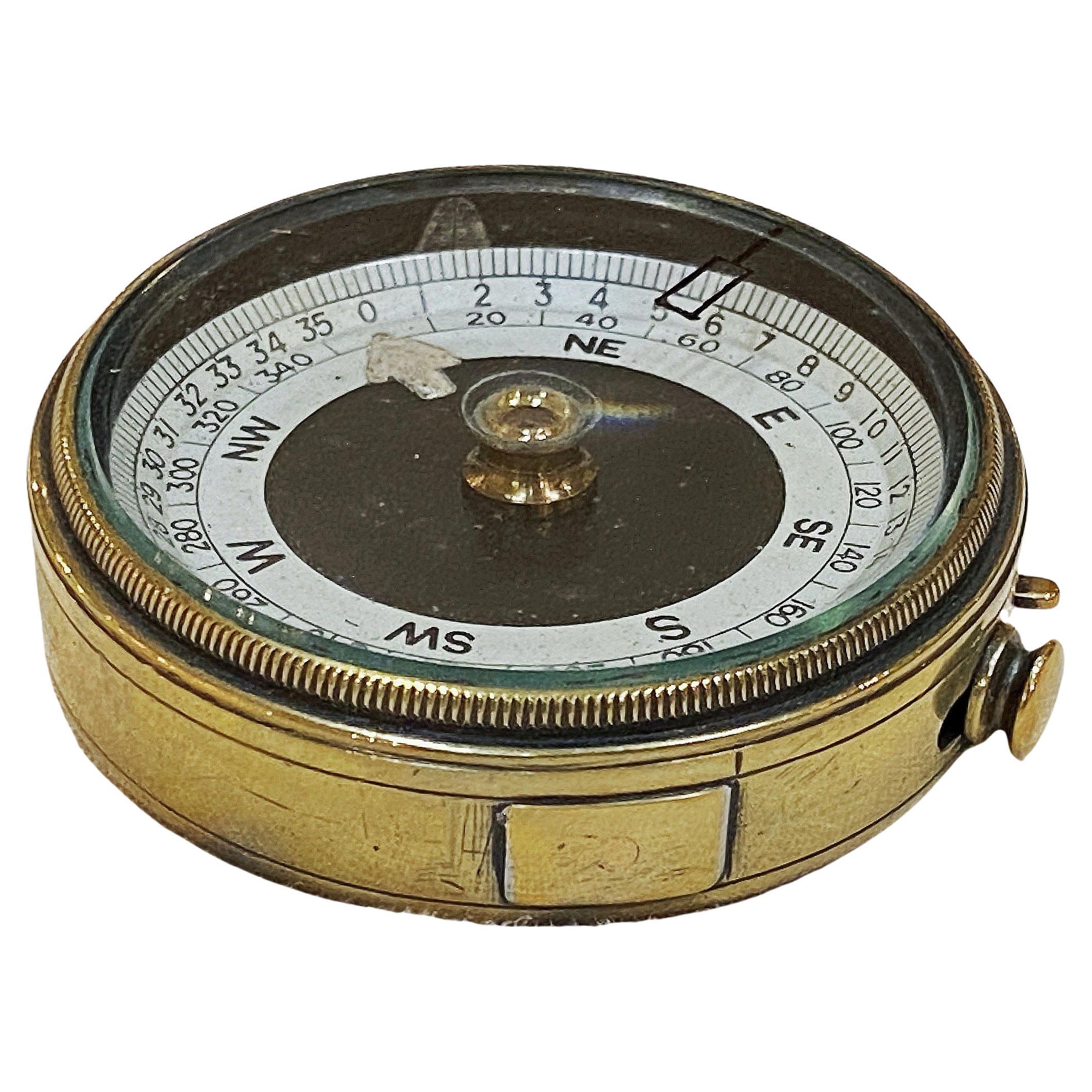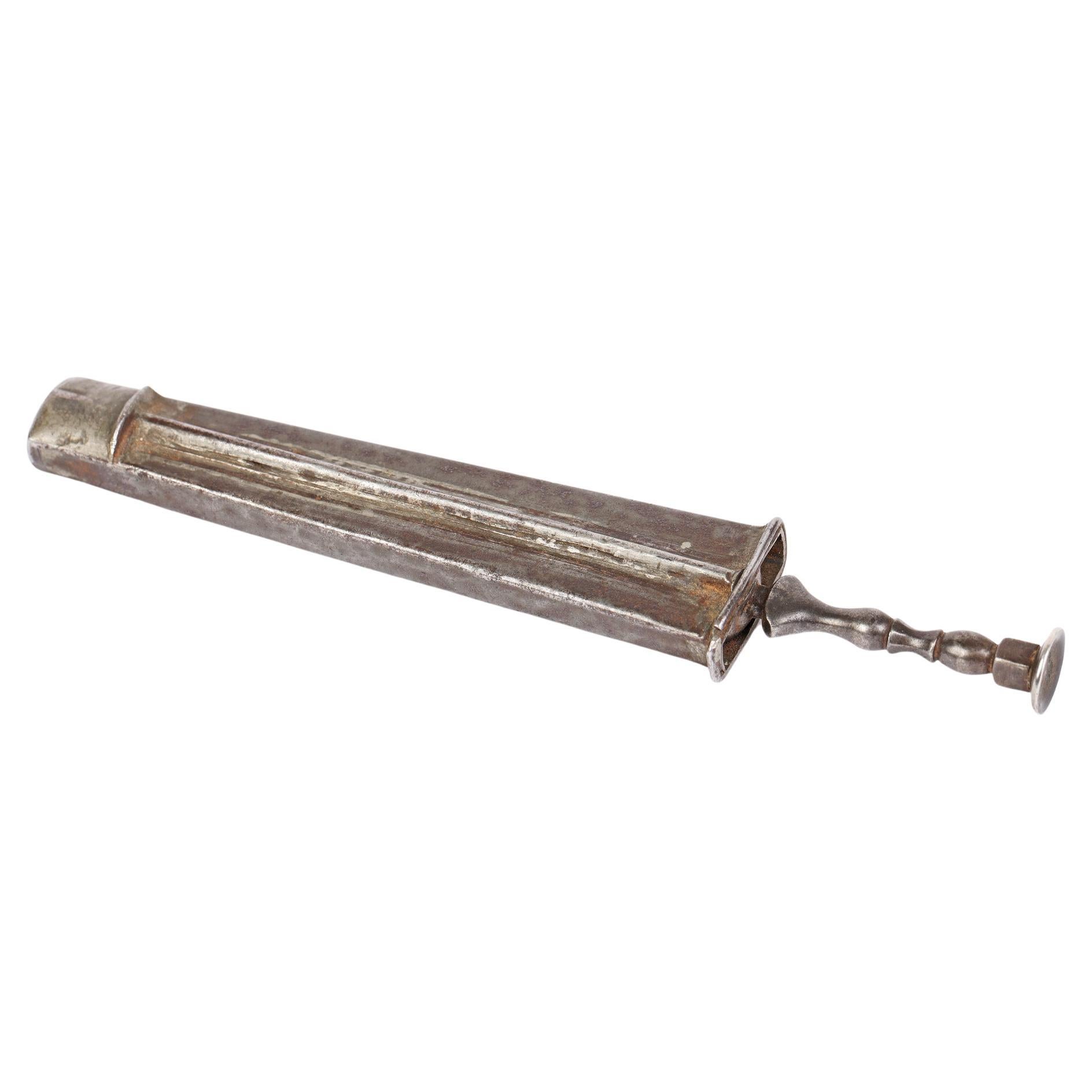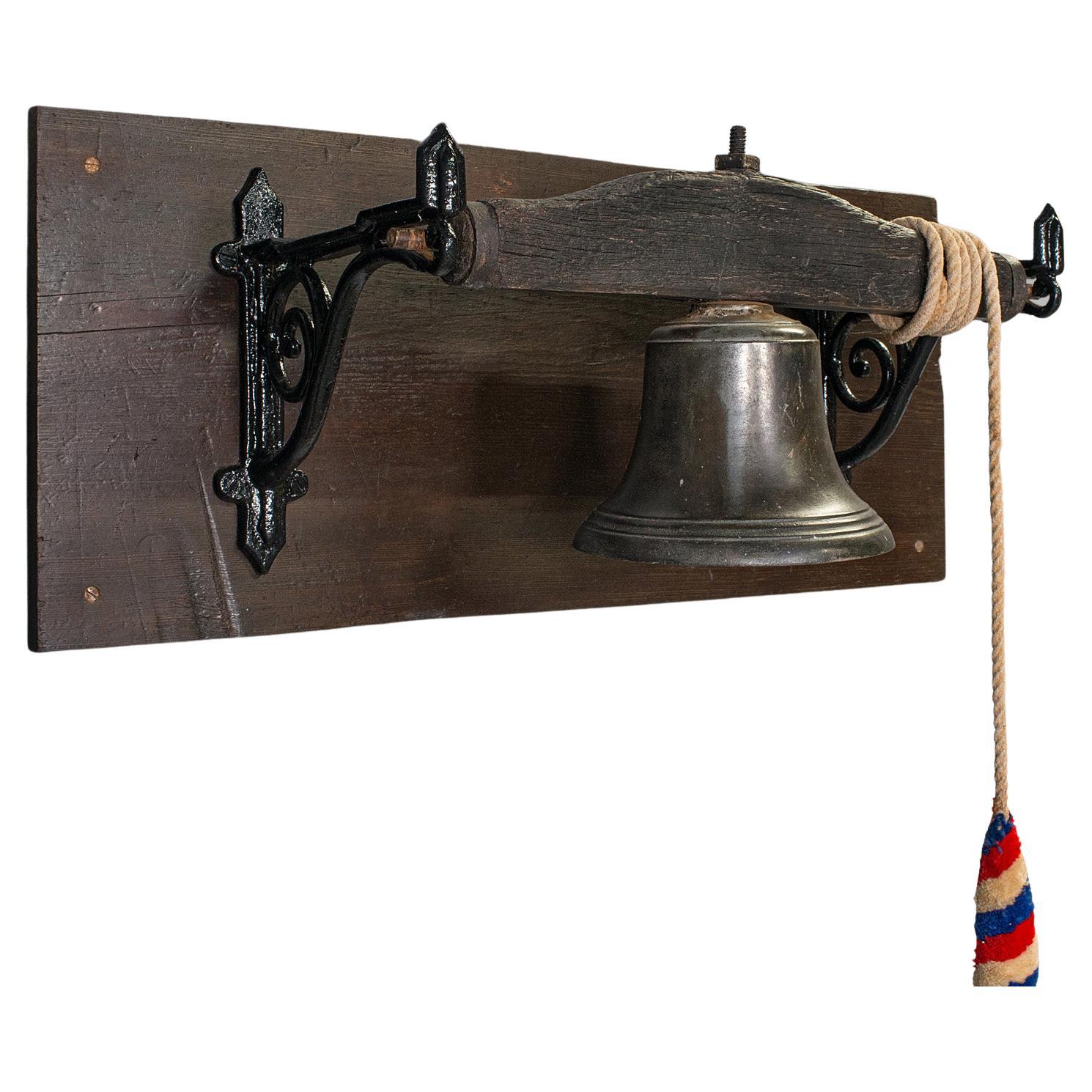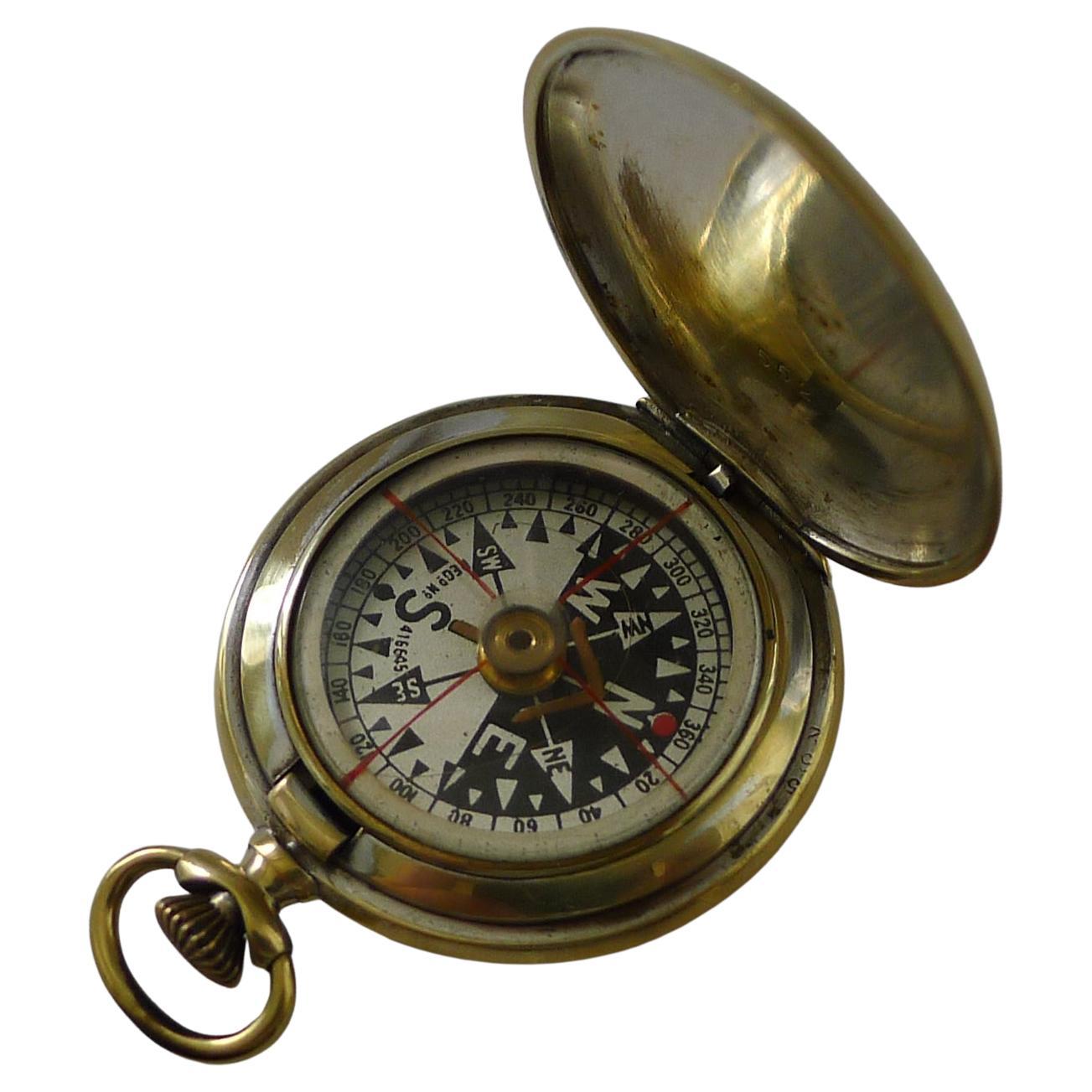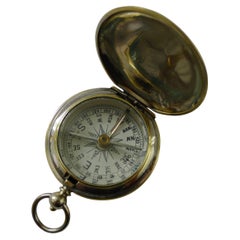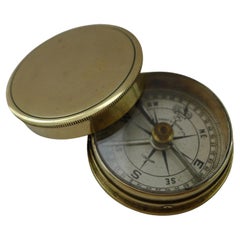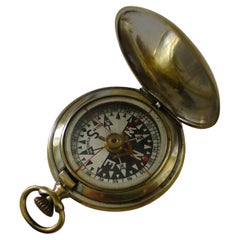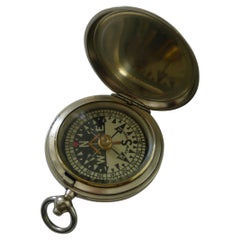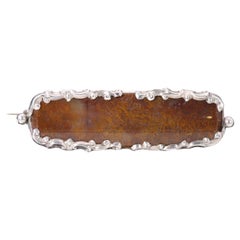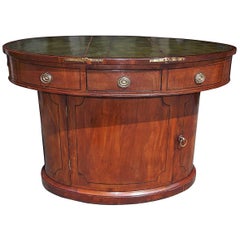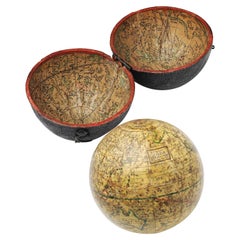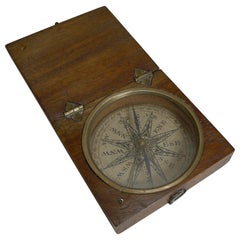
English Georgian Pocket Compass circa 1800 in Mahogany Case
View Similar Items
Want more images or videos?
Request additional images or videos from the seller
1 of 7
English Georgian Pocket Compass circa 1800 in Mahogany Case
$568.62List Price
About the Item
- Dimensions:Height: 3 in (7.62 cm)Width: 3 in (7.62 cm)Length: 3 in (7.62 cm)
- Style:George III (Of the Period)
- Materials and Techniques:
- Period:
- Date of Manufacture:circa 1800
- Condition:
- Seller Location:Bath, GB
- Reference Number:Seller: 410931stDibs: LU3365316153051
About the Seller
5.0
Platinum Seller
Premium sellers with a 4.7+ rating and 24-hour response times
Established in 1980
1stDibs seller since 2018
480 sales on 1stDibs
Authenticity Guarantee
In the unlikely event there’s an issue with an item’s authenticity, contact us within 1 year for a full refund. DetailsMoney-Back Guarantee
If your item is not as described, is damaged in transit, or does not arrive, contact us within 7 days for a full refund. Details24-Hour Cancellation
You have a 24-hour grace period in which to reconsider your purchase, with no questions asked.Vetted Professional Sellers
Our world-class sellers must adhere to strict standards for service and quality, maintaining the integrity of our listings.Price-Match Guarantee
If you find that a seller listed the same item for a lower price elsewhere, we’ll match it.Trusted Global Delivery
Our best-in-class carrier network provides specialized shipping options worldwide, including custom delivery.More From This Seller
View AllAntique English Brass Cased Compass c.1900
Located in Bath, GB
A handsome cased late Victorian or Edwardian compass with hinged lid, the little button on the top used to open; just like a full hunter pocket watch.
The case is made from brass wi...
Category
Antique Early 1900s British Edwardian Scientific Instruments
Materials
Brass
Fine Brass Cased Pocket Compass by Short & Mason Ltd., London c.1910
By Short & Mason
Located in Bath, GB
A very fine English brass cased compass, professionally cleaned and polished restoring it to it's former glory. The face signed Short & Mason / London together with the brand name "...
Category
Vintage 1910s British Edwardian Scientific Instruments
Materials
Brass
Antique English Brass Cased Compass Reg. No. For 1903
Located in Bath, GB
A handsome cased late Victorian or Edwardian compass with hinged lid, the little button on the top used to open; just like a full hunter pocket watch.
The dial is lucky enough to ha...
Category
Antique Early 1900s British Edwardian Scientific Instruments
Materials
Brass
Antique English Nickel Cased Compass Reg. No. For 1903 - WW1 Military Issue
Located in Bath, GB
A handsome cased World War One issued compass with hinged lid, the little button on the top used to open; just like a full hunter pocket watch. The front is stamped with the war off...
Category
Vintage 1910s Scientific Instruments
Materials
Nickel
Antique English Brass Cased Folding Magnifying Glass c.1920
Located in Bath, GB
A lovely shaped little folding / pocket magnifying glass which folds into a shaped brass case, marked "Made In England".
Dating to c.1920, remaining in excellent condition measuring...
Category
Vintage 1920s British Scientific Instruments
Materials
Brass
Antique English Inlaid Mahogany Tea Caddy, circa 1790
Located in Bath, GB
A very handsome George III tea caddy, made from Mahogany and beautifully inlaid with panels and highly decorative foliate marquetry to the front and top. The top has a handsome cast ...
Category
Antique 1790s English George III Tea Caddies
Materials
Mahogany
You May Also Like
Antique English Georgian Sterling Silver Pocket Cigar Case
Located in Hamilton, Ontario
This sterling silver and intricately engraved cigar case was made in London England in circa 1831, during the reign of King George IV. The top and bottom are both ornately engraved w...
Category
Antique Early 19th Century English George III Tobacco Accessories
Materials
Sterling Silver
English antique Georgian silver mounted moss agate brooch circa 1800
Located in Central England, GB
This lovely Georgian antique brooch is made from unmarked silver (tested) which is not unusual for jewellery from this early period.
The beautifully polished stone tablet is a piec...
Category
Antique Early 19th Century English George III Collectible Jewelry
Materials
Agate, Silver
English Mahogany Oval Sea Captains Leather Top Desk, Circa 1800
Located in Charleston, SC
English mahogany oval sea captains desk with hinged leather top concealing two upper hidden compartments, single front drawer, original brasses, ebony...
Category
Antique Early 1800s English George III Desks
Materials
Brass
English Pocket Globe, London, Circa 1775-1798
By Herman Moll
Located in Milano, IT
Pocket globe
London, between 1775 and 1798
Re-edition of the globe of Hermann Moll (1678-1732) dated 1719
The globe is contained in its original case, which itself is covered in shark skin.
There are slight gaps in the original paint on the sphere. The case no longer closes.
The sphere measures 2.7 in (7 cm) in diameter whereas the case measures 2.9 in (7.4 cm) in diameter.
lb 0.22 (kg 0.1)
The globe is made up of twelve printed paper gores aligned and glued to the sphere.
In the North Pacific Ocean there is a cartouche with the inscription:
A Correct
Globe
with the new
Discoveries.
The celestial globe is depicted on the inside of the box and is divided into two hemispheres with the cartouche:
A correct globe
with ye new cons
relations of Dr.
Halley & c.
It shows the ecliptic divided into the days of the zodiacal calendar and the constellations represented as animals and mythological figures.
On the globe are delineated the equinoctial line, divided by degrees and hours, the ecliptic and the meridian (passing west of Greenwich). The continents are shaded and outlined in pink, green and yellow. It shows: the Cook routes; a wind rose in the Southern Indian Ocean; Antarctica without land; Africa with Negroland (Hermann Moll is considered the first geographer to name the West African region in his 1727 map. (Encyclopaedia Britannica, ed. 1902, under "States of Central Africa"); Tartary in Central Asia; the Mogul kingdom in northern India; in North America only New England, Virginia, Carolina, Florida, Mississippi are identified; California is already a peninsula; the northwest coast of America is "unknown parts" (Alaska is not described and it is only partially delineated, it was to become part of the United States in 1867); Mexico is named "Spain"; Central South America "Amazone America". Australia (which was to be so named after 1829) is called New Holland. The route of Admiral Anson is traced (1740) and the trade winds are indicated by arrows. (See Van der Krogt, P., Old Globes in the Netherlands, Utrecht 1984, p. 146 and Van der Krogt, P. - Dekker, E., Globes from the Western World, London 1993, pp. 115.)
Elly Dekker, comparing Moll’s 1719 globe and his re-edition (of which the one described above is a sample), identifies the differences between them: the two editions are quite similar to each other, but in the "anonymous" globe, compared to the previous globe of 1719, California looks like a proper peninsula - the reports of the Spanish explorers of the region had given rise to uncertainty over whether it was connected to the mainland or not. The geographical nature of California was confirmed after the explorations of Juan Bautista de Anza (1774-1776). The routes of Dampier's journey were partially erased and the route of Captain James Cook's first voyage was superimposed on them, and the geography of Australasia was adapted accordingly, including the denomination of the Cook Strait. See Dekker, Elly, Globes at Greenwich, 1999.
An important ante quem element is represented by Tasmania: it is not separated from Australia by the Bass Strait...
Category
Antique Late 18th Century English George III Globes
Materials
Shagreen, Paper
Sundial and Compass with Case, Schrettegger, Johan, Augsburg, Germany, Ca 1800
Located in Madrid, ES
Sundial and compass with case. Bronze. SCHRETTEGGER, Johan. Augsburg, Germany, around 1800.
Sundial with a polygonal shape made of bronze, engraved with plant elements on the front,...
Category
Antique Late 18th Century German Neoclassical Scientific Instruments
Materials
Bronze, Other
WWI British Military Pocket Compass of Brass with Original Leather Case
Located in Austin, TX
A working British marching or sighting compass of brass with original leather case from World War I - made for military and civilian use.
A handsome piece of militaria and a fine me...
Category
Vintage 1910s English Edwardian Historical Memorabilia
Materials
Metal, Brass
Recently Viewed
View AllMore Ways To Browse
Antique Needle Case
Card Holders and Cases
Pocket Compass
Antique Pocket Compass
Antique & Vintage Barometers
Antique Thermometer
Antique Industrial Scale
19th Century Balancing Scale
Vintage Instrument Cases
Brass Balance Scale
Thermometer Barometer
Weighing Scales
19th Century Barometers
Wood Camera
Antique Telescopes
French Barometer
Antique Industrial Machines
Antique Barometer Thermometer
